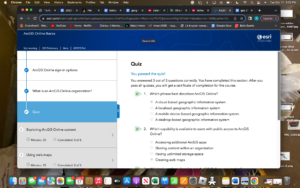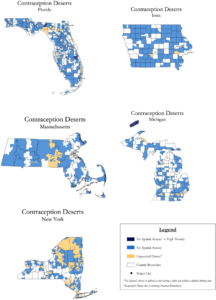Chp. 6
Time is an important dimension of GIS Data. You can imagine how time is important to GIS data including showing change throughout a certain time period or just when and where an activity was observed. That’s all time. There’s four keywords to this.
Moving: cars, ambulances, airplane feeds
Discrete: criminal incidents. Earthquakes, instagram feeds.
Stationary: wind speed, highway and street traffic speed
Change: flooded areas, land use and land cover changes
In spatiotemporal GIS data, the time of an event can be duration or a point in time:
Point in time: The moment a lightning strike occurs
Duration in time: When a wildfire starts and ends.
Key terms:
Time measurement in other words: Time can be expressed in many units such as in years, months, days, etc.
Time reference systems(time zones): The most often used time zones are GMT and UTC. Both reference the prime meridian.
Time representations: Time can be represented in different formats and languages 12/18/2020 or write it out.
Temporal resolution: refers to the time interval at which events are sampled.
IoT: The network of physical objects, or things embedded with sensor and network connectivity that enable these objects to collect and exchange data. This can be in airplanes, heart monitors, taxis, and more.
Enterprise IoT applications: Include smart cities, infrastructure management, environment quality monitoring, small retail-inventory management, and precise agriculture.
Consumer IoT: include connected cars, connected health and smart homes.
ArcGIS Analytics for IoT and GeoEvent Server share similar components.
Ingest: This component interacts with various data sources. IT provides ways to communicate with IoT platforms, sensor networks, and more
Process: This component processes the real-time data received and translated by the ingestion component.
Outputs: The output component sends processed data to a variety of destinations. For example, sending alerts via email or SMS.
Other key definitions
Feed items: Allows users to received sensor inputs
Real-time analytic items: Allows users to perform real-item processing of those inputs including triggering alerts and actions.
Big data analytic items: Allow users to access and analyze big data repositories of historical observations.
Poll: the traditional approach in which a client periodically polls the server to retrieve the latest data.
Push: a new way to serve data in near real time using the HTML5 WebSocket protocol.
For this, I would make a dashboard app based on the voting precincts in Delaware County. We know that voting is becoming more and more important each election so making a dashboard based on this could be ideal. The app would just be taking the users location and showing them all the precincts in the area and what time they close. It would also point and give them directions to the closest precinct according to their app’s location.


